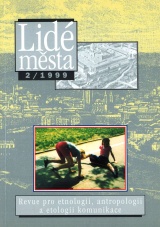Čeští nekatolíci v rumunském Banátu a v Bulharsku
Část první - Počátky Svaté Heleny
DOI:
https://doi.org/10.14712/12128112.4018Abstrakt
The issue of Czech emigration to the present-day Romanian Banat and a secondary emigration of a part of Banat Czechs into Bulgaria was comprehensively studied by the Czech, especially post-war, etbnography. However, the research largely omitted a major ethno-differentiating and ethno-preserving factor of this enclave, namely its religious anchoring. The presented study is trying not only to fill the gap, but also to show the vital importance of religious feelings for the life of Banat and Bulgarian Czechs. So far, Banat Czechs have only been studied as a whole, as participants in emigratlon (most scholars agree on their economíc and social motivation) in the early 1820s when they reportedly left for work to Banat as timber men. However, this concept is evidently wrong as it only refers to the Catholic part (majority) of settlers, originating from southwest Bohemia. The non-Catholic part of the Banat Czechs, the founders and later inhabitants of the village of Svatá Helena (Sfinta Elena), originating from the centre of east Bohemia, arrived in Banat sooner and for a different reason. It was their religious exclusivity. They were descendants of the "east Bohemian tolerance sectarianism," a popular religious movement whích arose after the Tolerance Decree was issued in 1 781. It can be described especially with a stress on ascetic religious practice and negative self-definition toward the Catholic as well as both recognised Protestant churches. As a "third party," not recognised by the state, a part of the tolerance sectarians were sent to Banat and Transylvania in the 1780s and later, in the 1820s, they were joined by other co-religionists from Bohemia. It was them who founded Svatá Helena, the first Czech settlement in Banat. Only some years later Czech Catholics, too, started to move to Banat, founded further settlements and also moved to Svatá Helena in the 1840s. However, the non-Catholic part of Svatá Helena maintained its sectarian character; strict separation of the Catholic and non-Catholic parts of the village is typical of the village during the whole of its existence. However, the originally ascetic nature of the non-Catholic community gradually lost its grip on some inhabitants. This development provoked a controversial reaction by most of the community, which was strengthened by the arrival of preachers of the free reformed church in the 1880s and 1890s. Further religious development of Svatá Helena will be the subject of Part II of the presented study.
Stahování
Publikováno
Jak citovat
Číslo
Sekce
Licence

Tato práce je licencována pod Mezinárodní licencí Creative Commons Attribution-NonCommercial-NoDerivatives 4.0.


